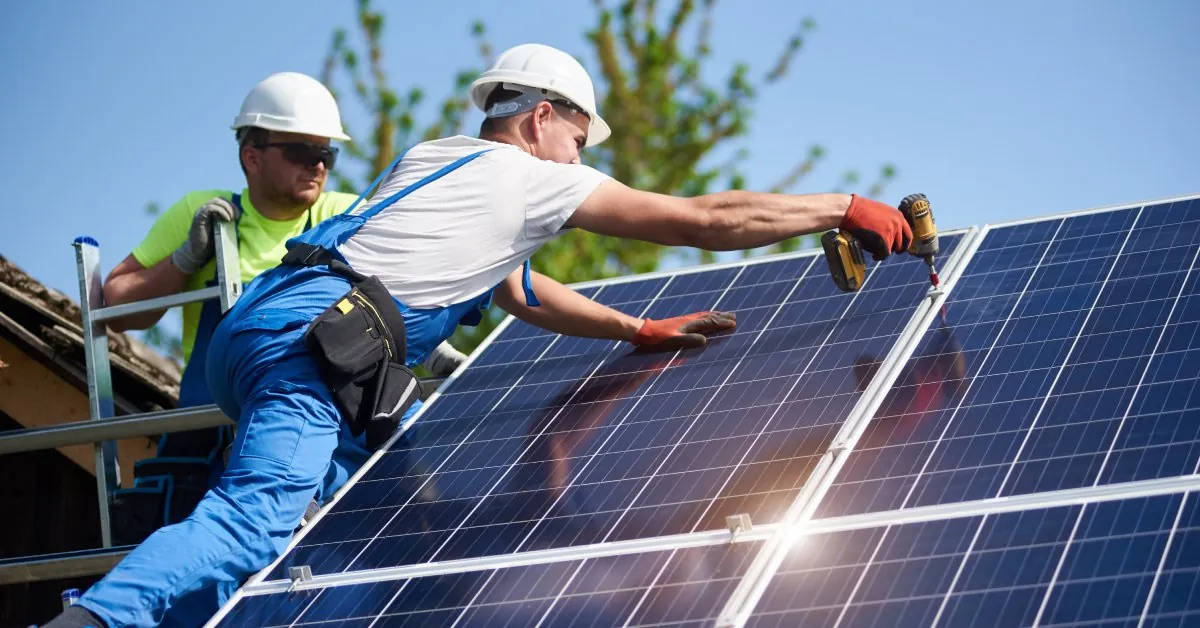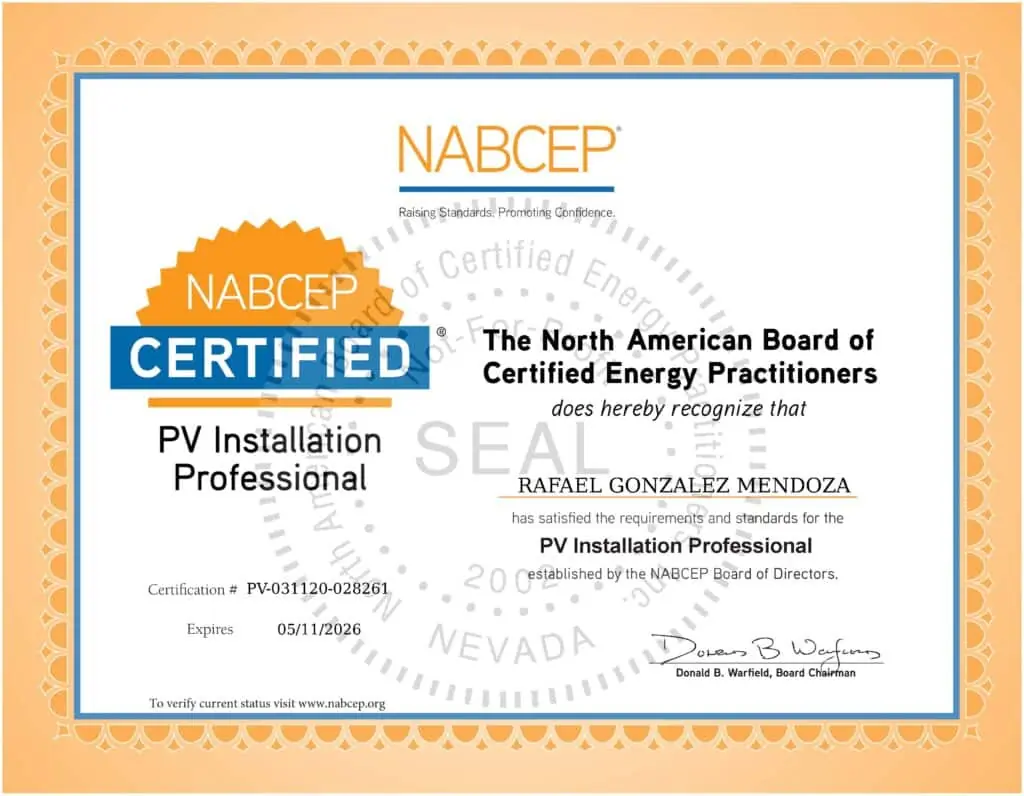Solar panels have become a vital resource for households, businesses, and governments transitioning to sustainable energy solutions. Beyond reducing electricity bills, solar panels lower carbon emissions and dependence on fossil fuels.
However, understanding solar technology, installation, and maintenance is essential for selecting a solar system. With multiple options in the market, aligning your choice with your building’s needs will enhance your experience for a worthwhile investment.
This guide covers everything you need to know about solar panels in 2025, including how they work, the newest innovations, and tips for selecting the right provider. Whether you’re a homeowner who is curious about solar energy or a business owner who’s exploring cost-efficient electricity solutions, this information will make you feel confident in your selection.
How Do Solar Panels Work?
Solar panels operate by utilizing the photovoltaic (PV) effect to convert sunlight into usable electricity. Each panel features photovoltaic cells, made from semiconductor materials such as silicon, which absorb sunlight and generate electrons. This process generates direct current (DC) electricity, which flows through the system.
Since most homes and businesses rely on alternating current (AC) electricity, an inverter converts the DC electricity into AC. From there, the electricity can power appliances, devices, and other electrical needs. Solar panels perform efficiently, even in less-than-perfect conditions such as cloudy weather or partial shading, making them a reliable source of renewable energy.
Types of Solar Panels
There are three primary types of solar panels available.
- Monocrystalline panels: These feature a single silicon crystal. They are the most efficient and durable solar panels, but they come with a high price tag.
- Polycrystalline panels: Manufactured using fragments of silicon crystals, these panels are less expensive yet less efficient than monocrystalline panels.
- Thin-film solar panels: These lightweight, flexible panels are ideal for applications such as mobile setups and unique architectural designs. However, their efficiency is generally lower compared to crystalline panels.
The Advantages of Installing Solar Panels

One of the primary benefits is the significant cost savings they provide by utilizing free solar energy, which can reduce electricity bills and even lead to energy independence over time. Solar panels have a positive environmental impact, lowering greenhouse gas emissions and mitigating the effects of climate change by promoting cleaner air and sustainable energy practices.
They also enhance energy security by reducing reliance on finite resources, such as fossil fuels, and providing a more stable source of power. Solar panel systems can increase property value, as many homebuyers prioritize energy-efficient homes with low operational costs.
Key Innovations for 2025
The year 2025 brought remarkable advancements in solar panel technology, revolutionizing the renewable energy landscape. One of the most outstanding innovations is the widespread adoption of bifacial solar panels, which can capture sunlight on both sides, significantly increasing energy output even in diffused light conditions.
Perovskite solar cells emerged with their exceptional efficiency, lightweight design, and reduced manufacturing costs, making solar energy more accessible than ever. Artificial intelligence (AI) and Internet of Things (IoT) technologies allow the panels to predict consumption patterns, optimize performance, and enhance energy storage capabilities.
Maintenance Requirements and Durability Features
Proper maintenance is essential to maximize the efficiency and lifespan of your solar panels, especially with the advancements introduced in 2025. Regular cleaning is necessary, as dust, dirt, and debris can accumulate on the surface of the panels, obstructing sunlight and negatively impacting energy output.
Scheduling annual inspections by a professional ensures that connections, inverters, and other system components function correctly and safely. Modern solar panels are more durable, incorporating advanced materials and technology to withstand extreme weather conditions, such as heavy rain, strong winds, and temperature fluctuations. With warranties lasting roughly between 25 and 30 years, proper care and routine checks protect your investment.
The Solar Panel Installation Process

The solar panel installation process is a series of steps tailored to your specific energy needs and property layout. It begins with an in-depth consultation and site assessment to determine the optimal location, angle, and capacity of the panels.
Following this, a detailed design plan that accounts for structural considerations and energy goals is necessary to obtain the permits required to comply with local regulations. Once approved, professionals mount the panels, secure their structural stability, and integrate vital components like inverters and batteries into your electrical system. Working with reliable solar service experts ensures proper installation, maximizes energy efficiency, and adheres to safety and regulatory standards.
How To Select the Right Provider
Choosing the best solar provider offers a smooth and efficient transition to solar energy in 2025. It is essential to evaluate providers based on their experience and expertise, as companies with proven track records are more likely to deliver high-quality installations and service.
Take the time to review customer testimonials and satisfaction ratings to evaluate reliability. Comprehensive warranty options and inverters are key to protecting your investment and supporting long-term performance. Reputable providers often offer ongoing maintenance and technical assistance to address any issues that may arise.
Grid-Tied vs. Off-Grid Systems
Grid-tied systems connect to the local utility grid, offering the benefit of selling surplus energy back to the grid through net metering, while also serving as a reliable backup source. These systems are more cost-effective upfront since they eliminate the need for expensive battery storage.
Off-grid systems function independently of the utility grid, relying entirely on solar panels and battery storage to generate and store power. They are ideal for remote locations without access to grid infrastructure or for those seeking complete energy independence. However, off-grid systems typically involve higher initial costs due to the need for substantial battery capacity and backup generators.
The Future of Solar Panels
Innovations, such as integrating solar cells into transparent surfaces like windows and seamlessly embedding them into building materials like roofs and facades, are reshaping the landscape of renewable energy. These advancements aim to maximize energy generation while minimizing the need for traditional standalone panels.
The popularity of community solar projects will grow significantly, allowing neighborhoods and regions to benefit from large-scale solar farms collectively. These initiatives will make solar energy more accessible, even for people who cannot install individual solar systems on their properties.
Solar panels represent a powerful solution to many of the challenges facing the modern world. By harnessing clean and renewable energy from the sun, they significantly reduce greenhouse gas emissions, helping to combat climate change and preserve the environment for future generations.
Beyond their ecological impact, solar panels offer substantial financial benefits by lowering energy costs and providing a sustainable alternative to fossil fuels. By investing in solar panels in 2025, individuals and businesses can contribute to a more sustainable, equitable, and prosperous future for all.


